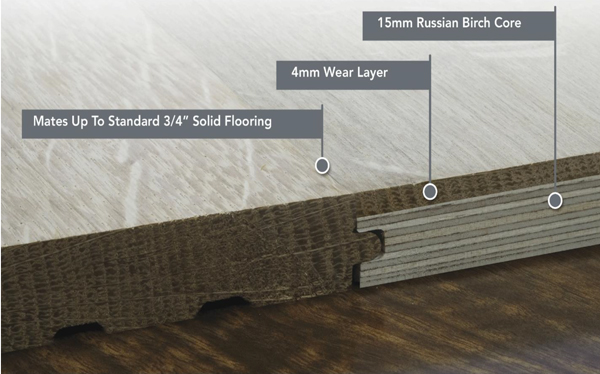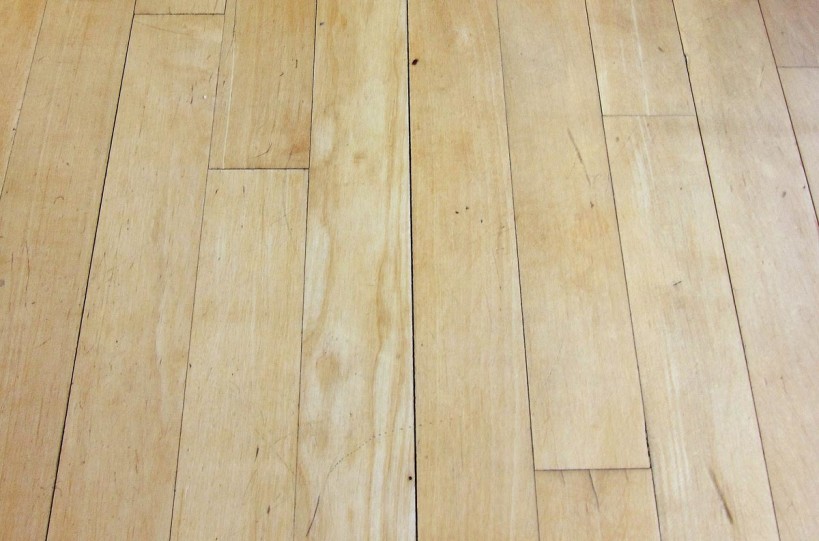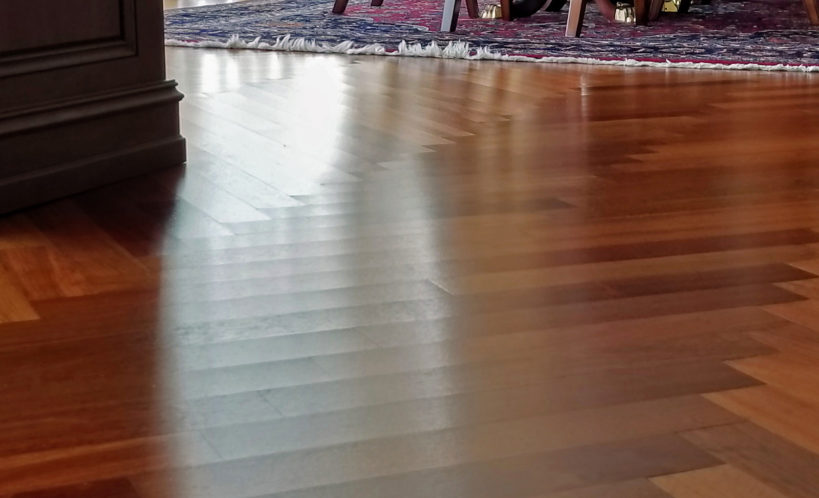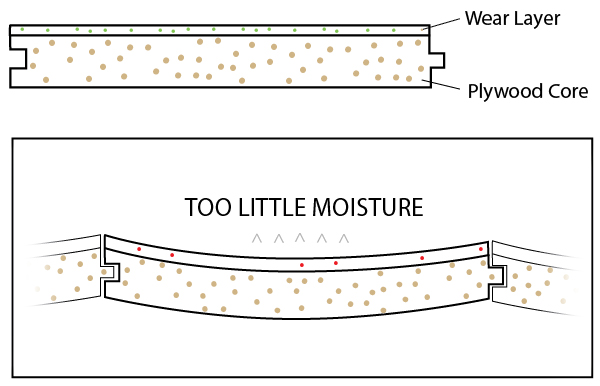With the rapid change in weather from warm and humid to cold and dry, the environment in your home is changing as well. It’s likely that the humidity level has plummeted from over 50% to 30% or lower, a humidity level where wood flooring begins to suffer.
“Dry Cupping” on Engineered Wood Floors
Engineered wood floors can actually exhibit cupping when moisture levels drop quickly in the Fall below 30% relative humidity. Engineered floors typically have a thin “beauty” or wear layer of hardwood on the top and a thicker core layer, which is typically plywood, on the bottom. When dry, hot air from your heater passes across the surface of the floor, the top contracts faster than the core, the effect is cupping as the wear layer dries out quickly and delaminates from the core.

The solution to “dry cupping” is to maintain relative humidity in your home above 30% all winter long. You can read more about dry cupping on our website.
Gaps in Hardwood Floors
If you have solid hardwood floors, the precipitous drop in humidity won’t begin to reveal itself for a couple of weeks. Because solid hardwood floors are, well, solid, the wood tends to release moisture at a slow, continuous rate. Rather than cupping what you will see if the humidity drops below the 30% range are gaps forming along the lengths of adjoining floorboards, and in the most serious dry conditions at the ends of the boards as well.

Once again, humidity control is essential to minimizing the size of the gaps but do note, as we wrote here, that it is normal for hardwood floors to expand and contract with the seasonal humidity fluctuations and that small gaps are normal.
Igor Murokh
Igor is a graduate of the University of Illinois and holds a B.A. in Economics. He has worked in the flooring industry for over 30 years and is the VP and Sales Manager of Mr. Floor Companies in Skokie, IL. Igor is a certified wood flooring inspector (CWFI) and routinely helps clients assess flooring issues.


